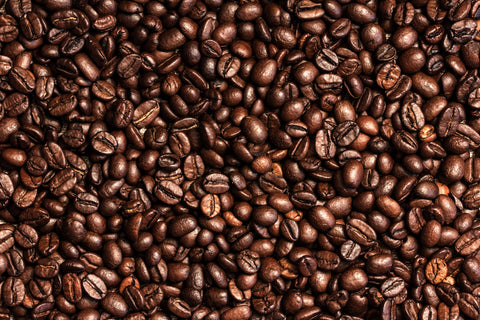10 great coffee facts that we absolutely love!

When it comes to coffee, we all think we know best, and perhaps it’s the only time people are proud to associate themselves with the term ‘snob’. But get ready coffee lovers... we’re about to flip your entire world upside down with some amazing facts about coffee you may not have known.
1) It’s widely believed that coffee was first discovered after 9th century goat herders noticed their goats behaving in a peculiar manner. It was said the goats appeared to ‘dance’ in a clumsy fashion after eating berries from an unknown shrub. These berries turned out to be coffee berries, which were actually first eaten before people began to use them to brew coffee. It's also where the name Clumsy Goat Coffee came from, pretty cool ey!
2) That leads us onto our next fact. Coffee is technically a fruit. Go on, Google it – I dare you. That’s right, coffee beans are actually seeds but are only called beans because of their resemblance to… beans.
3) We’ve all heard the phrase ‘wake up and smell the coffee’. Well, a group of scientists reported that simply smelling it can actually wake you up. Their study suggested the rich aromas of coffee alone can in fact fight the effects of sleep deprivation and keep you awake for longer. Sure, it’s interesting but it’s definitely no substitute for drinking it. Anyway, doesn’t that mean the phrase should be ‘smell the coffee and wake up’?
4) 400-500 billion cups of coffee are consumed each year. After petroleum, coffee ranks as the world’s second most traded commodity. It has been estimated that the world’s output of coffee is the product 25 million farmers and coffee workers in over 50 countries. We tried working out exactly how many beans that equates to but after 2 weeks we decided it just wasn’t worth it.
5) Have you ever heard of world class athletes insuring limbs for vast amount of money? Well how about this – the coffee taster for Costa coffee had his tongue insured for £10m. I bet that left a bitter taste in his mouth.
6) Here’s one for all the Friends fans. Remember Gunther from the coffee shop? Well it turns out he only got the role because during his interview he was the only candidate who was able to use a coffee machine. Well OK, it’s not a ground breaking fact but I bet you didn’t know that.
7) The most expensive coffee in the world is made from beans that have been excreted by an Indonesian animal known as a ‘Luwak’. The animal eats the raw coffee berries, which are partly digested, leaving just the beans at the other end. It’s reported that this process takes away the bitterness of the beans, adding a unique flavour. Each cup can set you back $35- $100. Are you brave enough to try it?
8) You can overdose on coffee. Try not to panic though; the lethal dose is thought to be somewhere around 100 cups, and by that point the amount of water alone would have already killed you. Having said that, it’s rumoured that French Philosopher Voltaire drank 50 cups of coffee a day. Sacrebleu! Now tell me you’re more into your coffee than this guy.
9) Adding cold cream to coffee keeps it hotter for longer. Without going too nerdy on you I’ll attempt to explain why. Firstly, black coffee loses heat faster because of its colour. Secondly, adding cream to the coffee makes it more viscous, and viscous liquids evaporate slower, meaning less heat is lost through evaporation. Thirdly, hotter surfaces radiate heat faster, and if you want to get nerdy in your own time, it’s due to a law known as the Stefan-Boltzmann law.
...phew! I’m glad that bits over.
10) Instant coffee was invented by George Washington. How on earth did that come about? I hear you gasp. Well, he was a chemist, and chemists invent things from time to time. Oh sorry, you thought I meant George Washington the American president. I think it’s time you wake up and smell the coffee!
I hope these facts spark a new appreciation for your favourite little bean, as well help you out in those final questions in the local pub quiz.
If all this coffee chat has fired up your taste buds, be sure to check out our ethically sourced, sustainable beans by clicking here.



